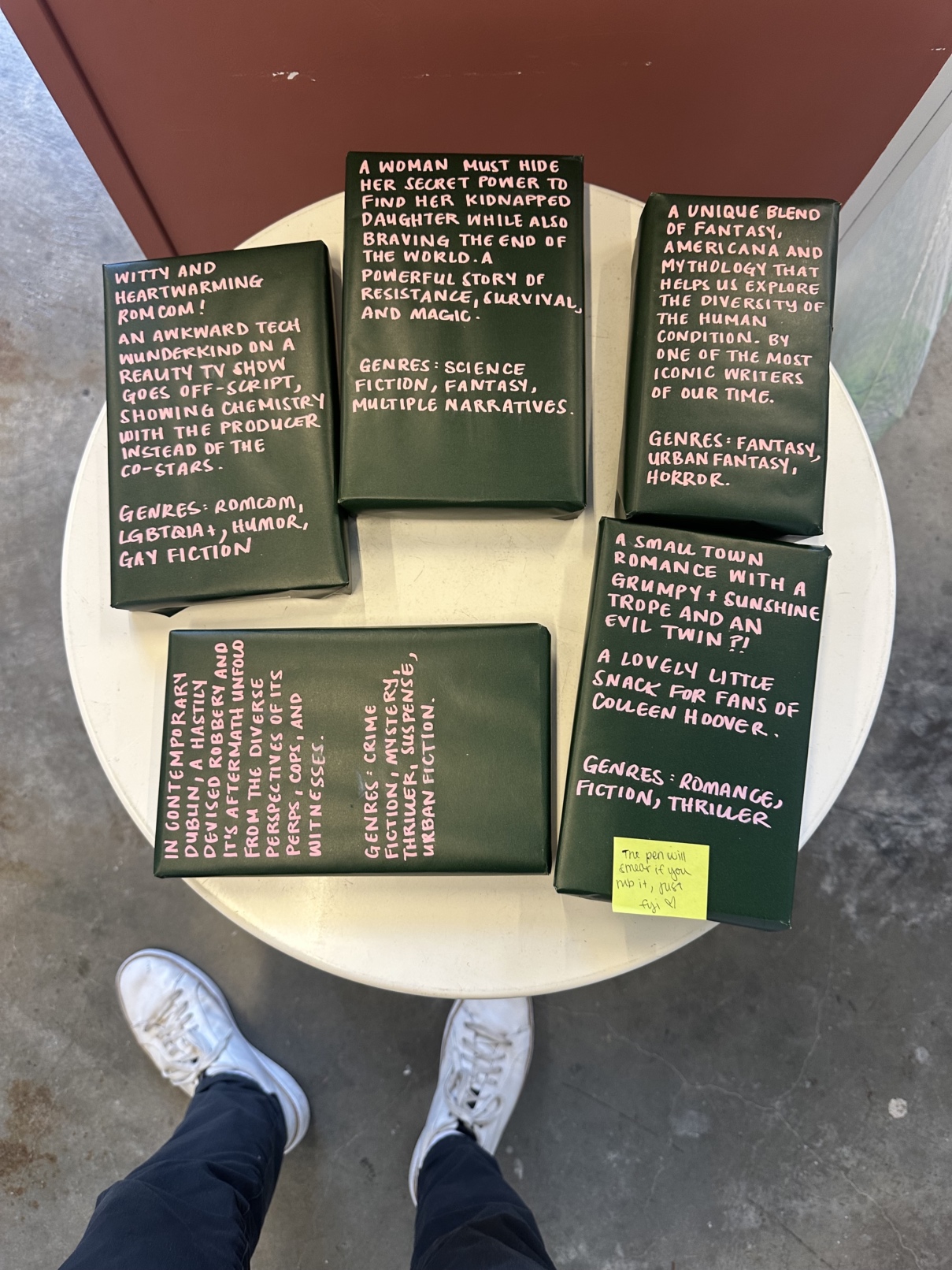Blind Date A Book is part ecommerce website and part art project. I first encountered its physical counterpart at a Barnes and Noble some five years ago: I remember thinking to myself even then that it was a perfect candidate for digitization. At long last, using the approach to making I picked up in DESIGN11, I’ve hacked together a boutique version of this experience accessible for anyone with an internet connection. And at the Recurse Center, I overhauled the site for a more fun, correct, and cost-effective developer experience. This is the story of how I became the proprietor of my very own bookshop.

At first I was confused by the lack of digital equivalent to the physical stands. Surely ordering books online is a solved problem. I mean, that’s what Amazon was founded for—and a custom frontend that just displays things differently seems a trifling project.
Turns out it’s hard to buy things with code. So it actually came out a bit more personal:
- A list of books chosen by people I care about.
- Descriptions they hand-wrote.
- A funky little website.
- Me going to buy the real book and sending it you myself.
More of a sensitive touch, perhaps.

The tech stack of the site bears further analysis. I’ve long puzzled over the best way to go about building web projects, going so far in my complaints-sans-solutions as to coin Benji’s Rule of Frameworks. For CLIs and iOS/macOS apps, the answers have been easy: but building for the internet has always seemed more experimental.
In the first iteration of this project, I tried out a framework called Web Origami and ran the commerce via Shopify. It wasn’t all sunshine and rainbows—the product was far too JavaScript-y for me—so I continued poking around until eventually I found Gleam. Building in Gleam is weird and exciting, which is exactly what I’m looking for! I like it so much that I gave a talk about it at Recurse, the slides and notes for which are available to read here.
I also moved from Shopify to Stripe, which has allowed me to a) have a single source of truth by using key-value metadata in Stripe as a database and b) save $500/year by paying a percentage of profits instead of a fixed and pricey subscription.
Check out the website for yourself to find your next read and explore the code on GitHub!